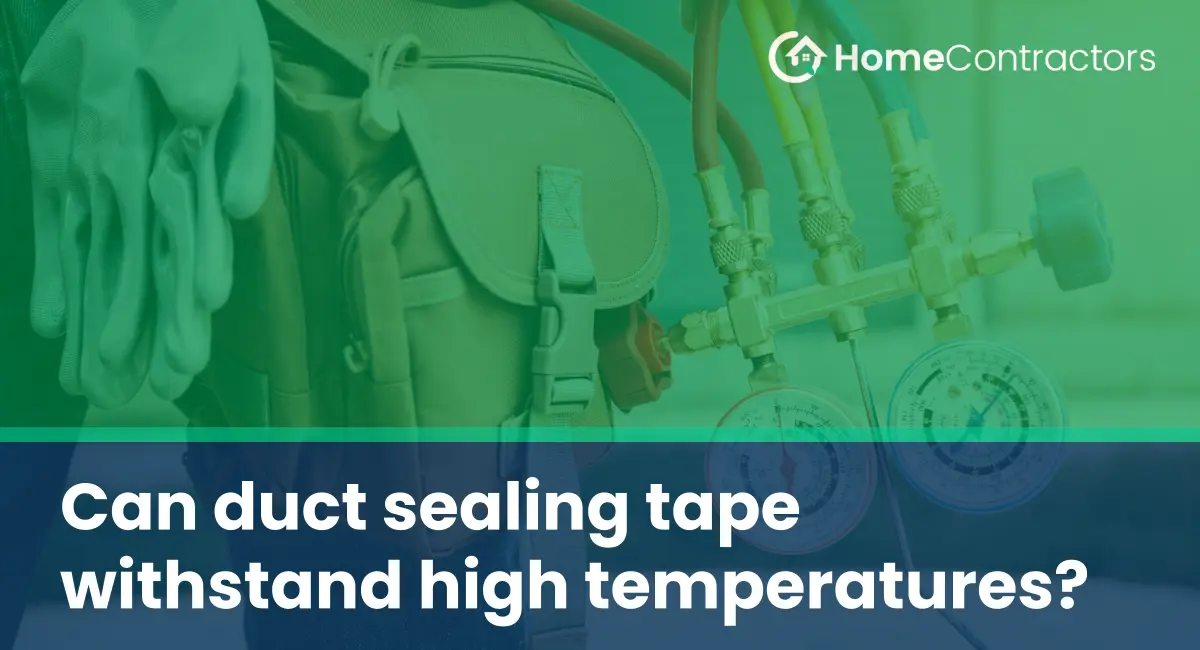Duct sealing tape is a commonly used adhesive tape that is specifically designed for sealing and insulating ductwork. It helps to prevent air leaks, maximize energy efficiency, and maintain indoor air quality. However, when it comes to using duct sealing tape in high-temperature environments, there may be concerns about its durability and effectiveness. This article explores whether duct sealing tape can withstand high temperatures.
Understanding Duct Sealing Tape
Before delving into the topic, it is important to understand what duct sealing tape is and how it works. Duct sealing tape, also known as duct tape or HVAC tape, is a pressure-sensitive adhesive tape that is specifically designed for use in heating, ventilation, and air conditioning (HVAC) systems. It is typically made from a flexible backing material, such as cloth or metalized polyester, with a strong adhesive on one side.
The Purpose of Duct Sealing Tape
Duct sealing tape is primarily used to seal joints, seams, and gaps in ductwork to prevent air leaks. It helps to ensure that conditioned air from the HVAC system remains inside the ducts and does not escape. This not only improves energy efficiency by minimizing air loss but also helps to maintain consistent indoor temperatures and humidity levels. Duct sealing tape also plays a crucial role in preventing the entry of dust, insects, and other pollutants from entering the ductwork, thereby maintaining indoor air quality.
Limitations of Duct Sealing Tape
While duct sealing tape is highly versatile and suitable for a wide range of applications, it also has certain limitations. One of the limitations of traditional duct sealing tape is its resistance to high temperatures. Duct sealing tape is typically rated for use within a certain temperature range, which can vary depending on the type of tape and manufacturer. Exceeding these temperature limits can lead to tape failure, weakening the seal and allowing air leakage.
High-Temperature Duct Sealing Tape
To overcome the limitations of traditional duct sealing tape and cater to high-temperature environments, manufacturers have developed specialized high-temperature duct sealing tape. This type of tape is specifically engineered to withstand elevated temperatures and maintain its effectiveness.
Features of High-Temperature Duct Sealing Tape
High-temperature duct sealing tape is designed with materials and adhesives that can withstand extreme heat. It typically has a higher temperature resistance compared to standard duct sealing tape, often ranging from around 200 to 500 degrees Fahrenheit. These tapes are often made from materials such as aluminum foil, fiberglass, or silicone, which are known for their high-temperature resilience and durability.
Applications of High-Temperature Duct Sealing Tape
High-temperature duct sealing tape finds various applications in environments where elevated temperatures are present. These include industrial facilities, automotive applications, high-heat exhausts, and specialized HVAC systems, such as those found in commercial kitchens or manufacturing facilities.
Maintenance and Replacement
While high-temperature duct sealing tape is specifically designed to withstand higher temperatures, it is essential to monitor and maintain the condition of the tape regularly. Over time, high temperatures, UV exposure, and other environmental factors can degrade the tape’s adhesive properties and effectiveness. Therefore, it is crucial to inspect the tape periodically and replace it if signs of damage or deterioration are present.
Traditional duct sealing tape may not be suitable for use in high-temperature environments as it is prone to failure and air leakage. However, specialized high-temperature duct sealing tape is specifically engineered to withstand elevated temperatures and maintain its effectiveness. This type of tape is designed with materials and adhesives that can withstand extreme heat, making it suitable for various applications in demanding environments. Nonetheless, regular inspection and replacement of the tape are essential to ensure optimal performance and prevent potential air leaks in ductwork.
